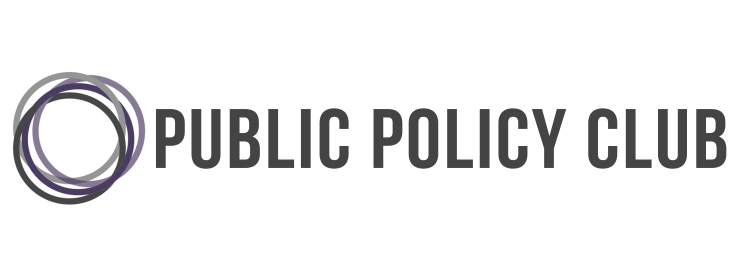The government is seeking to repeal the controversial three strikes law, which mandates maximum penalties for third-time violent offenders. The debate over the proposed repeal has raised claims that the three strikes framework disproportionately impacts Māori, that it is in breach of the New Zealand Bill of Rights Act, and that the sentencing law is ineffective at reducing recidivism. This article will explore the arguments around those claims and what repealing this law means for New Zealand.
By Maddison Lewis
What is the Three Strikes Framework?
It all starts with a baseball analogy. A batter, a fielder, and a ball. Three strikes and you are out. Except, this article is not about baseball. There is no batter, and there is no ball. Instead, there is a criminal justice system and a controversial three strikes law, which the Labour government is seeking to repeal. Late last year, Justice Minister Kris Faafoi announced the Three Strikes Legislation Repeal Bill [1]. The bill, which has completed its first reading and is currently being reviewed by a select committee, seeks to undo changes made to criminal sentencing established under the Sentencing and Parole Reform Act 2010 [1].
These changes, commonly referred to as the three strikes law, mandate that criminals convicted of a third violent offence be given ‘the maximum penalty for that offence without parole’ unless doing so would be ‘manifestly unjust’ [2]. The intention behind the changes was to deter offenders from reoffending and to remove repeat offenders from the community [3]. Hon Judith Collins, at the time of the law being passed, claimed that it would ‘imprison the worst repeat violent and sexual offenders and the worst murderers for longer periods [4].
However, underpinning the Labour government’s decision to repeal the law are claims that the three strike system disproportionately impacts Māori, is inconsistent with the New Zealand Bill of Rights Act, and is ineffective at changing crime rates. The National Party denies this, instead accusing the government of a ‘soft-on-crime approach’ amid increasing levels of violent offending [5]. The result is a highly contested bill that could alter how the New Zealand justice system sentences offenders. So, what are the arguments for and against repealing the system? And how did the political left and the political right come to such differing conclusions on how the criminal justice system should sentence offenders?
Strike One: Is the Law Discriminatory?
A key argument for repeal is that the three strikes framework disproportionately affects Māori [3]. A government evidence brief in 2018 examining the three strikes framework found that 48% of first, second and third strikes under the law were received by Māori offenders [5]. The finding was further supported by a 2021 Impact Summary by the Ministry of Justice, which found that Māori ‘were nine times more likely to receive a first strike’ and ‘over 18 times more likely to receive a second strike’ [6]. When it came to three strikes, 82% of those were Māori [6].
Speaking at the first reading of the bill, MP Ginny Anderson, acknowledged this impact saying, ‘The fact is that this kind of blanket mandated sentencing does disproportionately affect Māori’ [7]. However, whilst acknowledging the overrepresentation of Māori in the criminal justice system, Hon Mark Mitchell, disagreed that repealing the three strikes law would help [7]. Instead of repealing the framework, he advocated for keeping the law but also following a ‘social investment’ approach which would focus on investing in Māori youth [7].
Professor Tracey McIntosh and Sir Kim Workman note that ‘the causes of disproportionality within the criminal justice system are complex’ [8]. They highlight research that suggests that overrepresentation in the justice system is tied to New Zealand’s colonial history, land dispossession, cultural assimilation, and other factors such as socioeconomic status, and institutional racism [8]. This shows that three strikes legislation cannot be interpreted in isolation. There is a multitude of factors that work within the law and wider society to create the outcomes New Zealand sees today.
Underpinning the views of the opposing political parties are two conflicting narratives on how to best create more proportionate representation in the New Zealand justice system. Both acknowledge that there is disproportionate representation. The key point of contention is whether repealing the framework will do anything to help.
Strike Two: Is the Law Inconsistent with the New Zealand Bill of Rights Act?
Others critical of the three strikes system have argued that it is inconsistent with protected legal rights. The New Zealand Bill of Rights Act provides the right not to be subjected to ‘disproportionately severe treatment or punishment.’ [9]. Prior to the three strikes legislation coming into force, the New Zealand Council for Civil Liberties submitted that the proposed framework would be inconsistent with this right. In particular, the group was concerned about situations where a person may commit an offence ‘on the less serious scale on offending’ but would be ‘sentenced to the maximum sentence for that offence’ [10]. Amnesty International also at the time made a submission criticizing the framework as being inconsistent with this right [11]. They highlighted that the three strikes framework restricts judges’ ability to consider the individual circumstances of the offender, which are relevant when sentencing [11].
These concerns are highlighted in two recent legal cases. In the case of R v Ratima in 2017, Gordon J highlighted that without the three strikes mandate, and accounting for factors relevant to the case the choice of sentence would have been three years and eleven months imprisonment [12]. Under the three strikes system, Gordon J gave a ten year sentence [12]. In the more recent case of R v Fitzgerald in 2020, the Supreme Court raised similar concerns saying a sentence given under the act ‘went well beyond excessive punishment and would shock the conscience of properly informed New Zealanders.’ [13]
The current repeal bill aims to address such ‘concerns regarding inconsistencies with the New Zealand Bill of Rights Act 1990’ [9]. However, Hon Simon Bridges speaking at the first reading of the repeal bill, raised the concern that strict adherence to the Bill of Rights in the legislature would lead to a situation where parliament ‘can never pass a law if there’s a New Zealand Bill of Rights issue in it’ [7]. He continued to criticise the repeal bill arguing that the ‘courts increasingly want to assert that a complete judicial discretion belongs and exists for them’ [7]. Bridges denied this was the case and accused the government of being ‘judiciary-pleasing’ [7].
It is evident the debate around repealing three strikes legislation raises significant constitutional questions. How much discretion should the judiciary have when it comes to sentencing? How much should parliament intervene in the sentencing process? And importantly, how should the legislature consider New Zealand Bill of Rights issues when making law? These questions are further complicated by the fact that under Section 5 of the New Zealand Bill of Rights Act, any right established in the act can be limited when justifiable ‘in a free and democratic society’ [9]. Any consideration of three strikes legislation will have to involve a consideration of whether restrictions on rights would be supported by Section 5.
Strike Three: Is the Law effective at decreasing crime rates and reoffending?
A key question remains. Is the three strikes law effective when it comes to reducing reoffending and improving crime rates? The evidence brief in 2018 on three strikes legislation came to the conclusion that there ‘is no substantial international or New Zealand evidence on the effect of three strike laws on crime’ and that what evidence there was, had mixed conclusions [5]. Furthermore, the brief highlighted that research into three strikes legislation tended ‘to be prone to political bias’ [5].
Despite this, Minister Kris Faafoi when introducing the repeal bill stated that the ‘evidence remains overwhelming that there has been no effect on violent crime rates since its implementation in 2010’ [1]. Hon Mark Mitchell contested Faafoi’s comments at the reading saying that by 2018 there were 10,433 first strikes, 338 second strikes, and six third strikes under the system, which he claimed pointed to evidence of deterrence. Yet, that was also met with disagreement, with Hon Marama Davidson, Minister for the Prevention of Family and Sexual Violence, saying the numbers only demonstrated that judges were forced to ‘weedle around’ the three strikes framework [7].
There is clearly partisan disagreement around what evidence exists and what existing evidence does say. Radio New Zealand writing on the matter commented that neither the National Party nor Labour Party ‘had a lot of evidence to point to’ [14]. It is evident that further study is needed on the effect of three strikes legislation in New Zealand to better understand the repeal.
Where next?
The three strikes repeal bill is a complicated policy that cannot be boiled down to a simple problem. It involves issues of rights, the issue of inequitable representation of Māori in the criminal justice system, and deep constitutional questions such as the proper role of the judiciary in sentencing. Coming to a view on the repeal bill needs to involve a deep and well-researched consideration of these wider issues.
Should the government repeal the three strikes law or should a different approach be taken? With a clear majority in parliament, it is likely that the government will be able to pass the bill which would come into force as an Act on 1st July 2022.
Note: This article does not represent the views of the author.
Sources:
[1] https://www.beehive.govt.nz/release/government-moves-three-strikes-law
[3] https://www.legislation.govt.nz/bill/government/2021/0079/latest/LMS559989.html
[5] https://www.justice.govt.nz/assets/Documents/Publications/Three-Strikes-Law-Evidence-Brief.pdf
[6] https://www.justice.govt.nz/assets/Documents/Publications/2-RIA-Repeal-of-three-strikes-law.pdf
[7] https://www.parliament.nz/en/pb/hansard-debates/rhr/combined/HansDeb_20211116_20211116_64
[8] https://link.springer.com/chapter/10.1007/978-3-319-55747-2_48
[9] https://www.legislation.govt.nz/act/public/1990/0109/latest/DLM225507.html
[13] https://www.courtsofnz.govt.nz/assets/cases/2021/2021-NZSC-131.pdf
[14] https://www.rnz.co.nz/national/programmes/the-house/audio/2018820936/three-strikes-repeal
Image #3 https://www.nzherald.co.nz/nz/nationals-mark-mitchell-accuses-justice-minister-of-trivialising-3-strikes-bottom-pinching-case/73Q34MPNKKQA3CEVII3KPZCF6Q/




